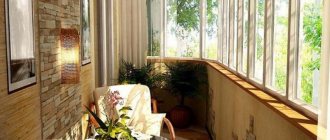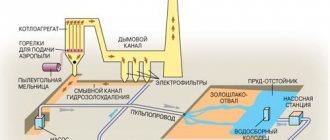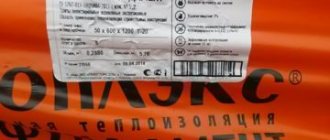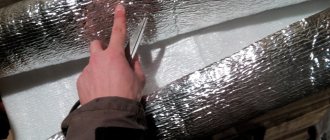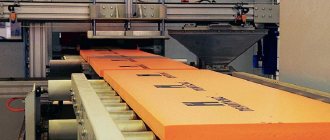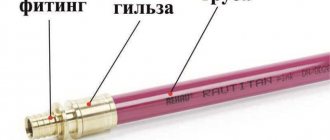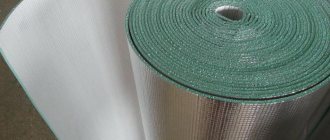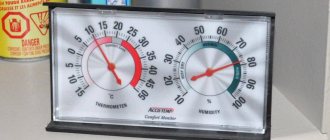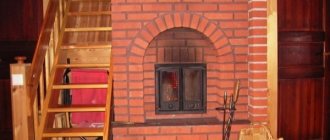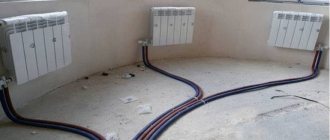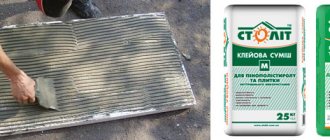Foam density: which one to choose for wall insulation outside
The article briefly and clearly tells what density of expanded polystyrene is best for external wall insulation.
Important recommendation: Read about the harm that styrofoam can be, and also visit the page that contains reviews of this material from people who have already used it for their own purposes. You might be surprised.
So, earlier on the pages of Vyborstm.ru we talked about the choice of the thickness of expanded polystyrene foam for wall insulation outside. Today we will talk about the choice of foam density.
As you know, today many are striving to make their home warmer, more comfortable, insulated. And this is understandable - less money will be required for heating in winter and for cooling air in summer.
In fact, there are many different heaters on the market that solve this problem. However, from an economic point of view and for some other reasons, many still prefer expanded polystyrene.
And then the question arises:
Types of foam and their technical characteristics
Polyfoam for insulation of the attic with foam - for a long time has been and remains one of the most demanded thermal insulation materials. Even the presence on the market of a wide variety of mineral wool insulation, products from extruded polystyrene foam, and other materials, did not affect the insulator's leadership among inexpensive insulation materials.
In this article, we will consider the types of foam, their technical characteristics, as well as the pros and cons of this material.
What density of polystyrene to choose for wall insulation of a residential building?
We point out right away that this means exterior decoration, since this option is the most optimal.
There are different densities of foam on the market today. The most common polystyrene foam with a density of 15, 25, 35.
So what value for this parameter should you choose?
Everything is very simple. For wall insulation outside, foam plastic with a density of 25 is perfect. This option is often preferred. The design will be reliable, heat-saving performance will be at its best.
Of course, no one can forbid you to use 15 density polystyrene foam for insulating a residential building. However, we do not recommend that you do this.
Even by touch, you can determine that the reliability will not be up to par. Squeeze such material with two fingers and you will understand what is at stake.
Such foam will serve less, the design will not be so reliable. In addition, in terms of heat-saving characteristics, it is inferior to a similar material of 25th density.
Better to overpay a little, but do it the way you need it. And in a few years you will not regret that you saved money in the wrong place.
Level 15 foam density is good for insulating non-critical (non-capital) structures. For example, it can be shops, offices, stalls, some kind of storage facilities, etc.
Although. here, too, much depends on how much and in what conditions you are going to use the same office or store. Some also use 25 for office space.
Can we use 35-density foam for insulation?
Yes, in principle you can. Some people do that.
However, you will have to pay much more for this. Such expanded polystyrene is much more expensive than a similar material of 25th density.
That is why many stop at around 25. This is quite enough for these tasks.
And finally: always buy certified material, deal with trusted manufacturers and sellers.
Well, now you know what density of foam to choose for insulating the walls of the house from the outside. We wish you a successful construction!
Application
Among the various types of foam, only material with a thickness of 100 mm and above is in greatest demand.
It can be used for:
- Insulation of the foundations of houses, since, no matter how many years have passed, it is not afraid of dampness, it is also often used to insulate engineering structures.
- In the process of building houses without foundations, for monolithic foundations.
- To prevent freezing of the foundation, it is recommended to insulate the horizontal and vertical parts. So, sheet by sheet, lay the foam along the foundation, and cover it with earth on top.
- Insulation of walls of houses, regardless of materials.
- Insulation of flat roofs of houses.
Expanded polystyrene is widely used in thermal insulation of building facades. To calculate the cost of insulation, not only the cost of polystyrene is taken into account, but also the price of the necessary materials for puttingty and plaster. And if you do not plan to carry out the work yourself, you should take into account the costs of third-party specialists.
As for the prices for finishing, their size will depend on the cost of the materials used. Also, the price will be affected by the area of the walls, and the larger it is, the higher the cost will be, and more materials will be spent on the work.
The choice of foam for self-warming at home
Korovin Sergey Dmitrievich
Master of Architecture, graduated from the Samara State University of Architecture and Civil Engineering. 11 years of experience in design and construction.
When choosing what kind of insulation to protect the building from the cold, they often stop at expanded polystyrene. This material has a low cost and does not require installation experience. But, using foam for insulation, several requirements must be met. They are due to the performance characteristics of the material.
Foam cost
The German company BASF became the developers of foam plastic back in 1952 and since then the popularity of this material has only grown, which is not surprising, since expanded polystyrene has a porous structure and light weight, which is very convenient in transportation.
This material has excellent thermal insulation properties, therefore it is a leader in the insulation of building walls.
If we compare this material with other thermal insulation materials in cost, then the price of expanded polystyrene per cube will be the lowest. For example, thermal insulation with mineral wool for an equal area will cost you several times more.
Application area
When insulating a house from the inside, it is necessary to increase the thermal insulation of the following structures:
- in the construction of the basement floor on the ground, if the underground floor is heated;
- in the pie of the ground floor when building a cold basement or underground;
- exterior walls;
- overlapping over the last floor when arranging a cold attic;
- covering when arranging a warm attic;
- mansard roof.
Of all these parts, polystyrene foam for home insulation is best used in wall construction. In floors, polystyrene should only be used in conjunction with logs, which will take on the main load from the floor, furniture, etc. The fact is that the density of expanded polystyrene does not allow it to withstand high compressive loads.
Ceilings with foam without logs can be used for technical purposes - attic floors, etc. Therefore, if you want to insulate the floor with high quality under the screed, the best insulation option is extruded polystyrene foam. Insulation from above should cover a layer of cement-sand screed 50 mm thick with additional reinforcement.For reinforcement, a mesh of reinforcement with a diameter of 3-4 mm is used.
Another area of application of polystyrene is the manufacture of permanent formwork for concreting. Such insulation is used in the construction of strip foundations. Allows to reduce the number of stages of work on pouring a monolith at home and at the same time to perform thermal insulation of the structure. Without fail, a reliable waterproofing must be provided on top of the expanded polystyrene.
Types of foam for home insulation
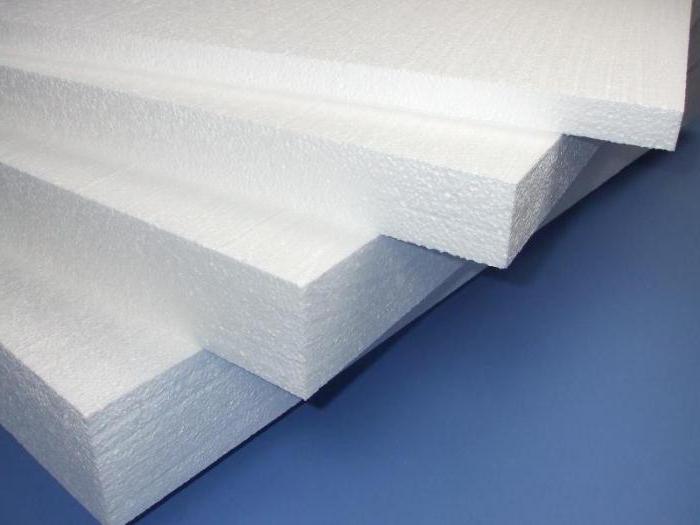
To understand what kind of expanded polystyrene is needed for specific types of work, it is worth carefully studying the types of material. The classification of heat insulators for walls and floors of a house is carried out according to the following criteria:
- raw materials for manufacturing;
- density;
- sizes.
Depending on the raw materials used, such types of foam are distinguished as polyurethane, polyvinyl chloride (PVC) and polyethylene. The first one has high elasticity and is foam rubber, which is actively used in the furniture industry. In construction, polystyrene foam is made from such foam.
Polyethylene foam is produced in the form of sheets and is used for packaging fragile items. The usual building foam is PVC. Expanded polystyrene of this type is suitable as insulation for a house from the inside and outside.
The density of the foam is an important indicator. The area of use of the material depends on it (can it be used in the construction of walls, floors, foundations, etc.). Before buying a foam insulation for your home, it is better to familiarize yourself with what it is, depending on the sign in question:
Related article: How to sheathe a wall with a laminate with your own hands
- PSB 50 is a high density material. In construction, it is rarely found due to the desire of customers to reduce financial costs. Such material is suitable as insulation from the outside and from the inside. Such material is allowed to be laid as part of the floor of premises with a constant presence of people, the arrangement of furniture and equipment.
- PSB 35 is suitable for insulating the walls of the house from the outside and from the inside. Insulation of this type can also be laid in the attic floor cake, provided there is a strong concrete screed. The density of polystyrene foam 35 is the most common.
- PSB 25. The density of the material allows it to be used as wall insulation from the side of the room. When laying, it is necessary to provide a gap between the heat insulator and the finishing material. It is strongly not recommended to use for floor and outdoor insulation.
- PSB 15 is the minimum density used in construction. This type is best suited for thermal insulation of temporary structures (for example, change houses), containers and wagons.
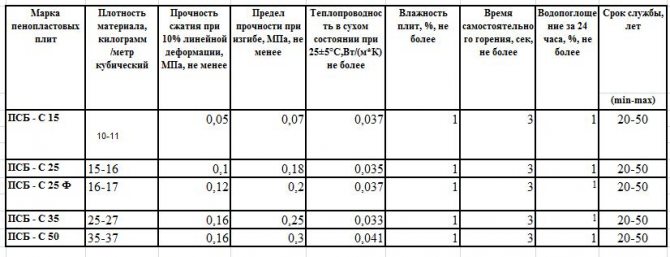

Characteristics of foam with different densities
The dimensions of the foam sheets are typical. If necessary, it is easy to cut the required shape from the material. Dimensions are prescribed depending on the area of the surface to be insulated, its length and height.
The following sizes are sold on the construction market:
- 2000x1000 mm.
- 1000x1000 mm;
- 1000x500 mm.
The most common sizes are 1000x1000 mm. Such sheets will not cause problems during transportation, at the same time, they have a fairly large area and allow you to increase the speed of work. The standard size of 1200x600 mm is also very popular - it perfectly suits the pitch of the racks or lathing with external insulation.
Foam grades 100 mm
Polyfoam PSB-S 15 - these are lightweight foam grades weighing up to 14 kg. These are economical and high-quality insulation materials that allow you to keep the heat of unloaded structures, they are also good sound insulators. They are used for wall insulation inside premises, temporary structures, roofless roofs, plasterboard partitions. These include the following brands of foam:
| Polyfoam PSB-S 15 density 8 kg / m3 | Polyfoam PSB-S 15 density 12 kg / m3 |
| Polyfoam PSB-S 15 density 10 kg / m3 | Polyfoam PSB-S 15 density 13 kg / m3 |
Polyfoam PSB-S 25 - the most widespread and universal brand of polystyrene. It is used in the insulation of floors, ceilings, walls, roofs, in layered masonry in buildings for various purposes. Available in various densities:
| Polyfoam PSB-S 25 density 14 kg / m3 | Polyfoam PSB-S 25 density 17 kg / m3 |
| Polyfoam PSB-S 25 density 16 kg / m3 | Polyfoam PSB-S 25 density 20 kg / m3 |
Polyfoam PSB-S 25F -
it is used in the insulation of facades, wall partitions, in layered masonry. It has high levels of noise and heat insulation. Can be used for curly cutting. It has a high density.
Polyfoam PSB-S 35
Is a high-density insulation. Due to its resistance to loads and external factors, it can be used in the construction of swimming pools and car parks, insulation of facades and to protect the soil from freezing in road construction. It is used in interior decoration of premises, in refrigerators and freezers, to create suspended ceilings. Look at analogues of polystyrene - Ursa XPS and Penoplex extruded polystyrene foam.
Polyfoam of the professional series has a stepped edge to isolate the "cold bridges" and a special textured surface for better adhesion to adhesives. Foam plastics are packed in polyethylene film with a corporate logo. They are easy to transport, store and install.
Thickness calculation
Before buying a material, it is required not only to select its strength and dimensions, but also to calculate the required thickness of insulation for walls or other structures. When designing a building, specialists perform a special heat engineering calculation manually or using programs, the field of which is the dimensions of the heat insulator.
The thickness for a private building can be selected without making a calculation. But at the same time it is necessary to take into account the climatic features of the area and the operating conditions of the facility. In the vast majority of cases, the following sizes can be recommended:
- wall insulation thickness - 100 mm;
- thickness for the attic floor - 150 mm;
- thickness for the floor of the 1st floor and the roof - 200 mm.
But in any case, it is better to assign the dimensions precisely. You can calculate the required amount of insulation using fairly simple programs. For example, the calculation can be done in the Teremok program. It is freely available on the Internet. There are two versions: online and a PC app.
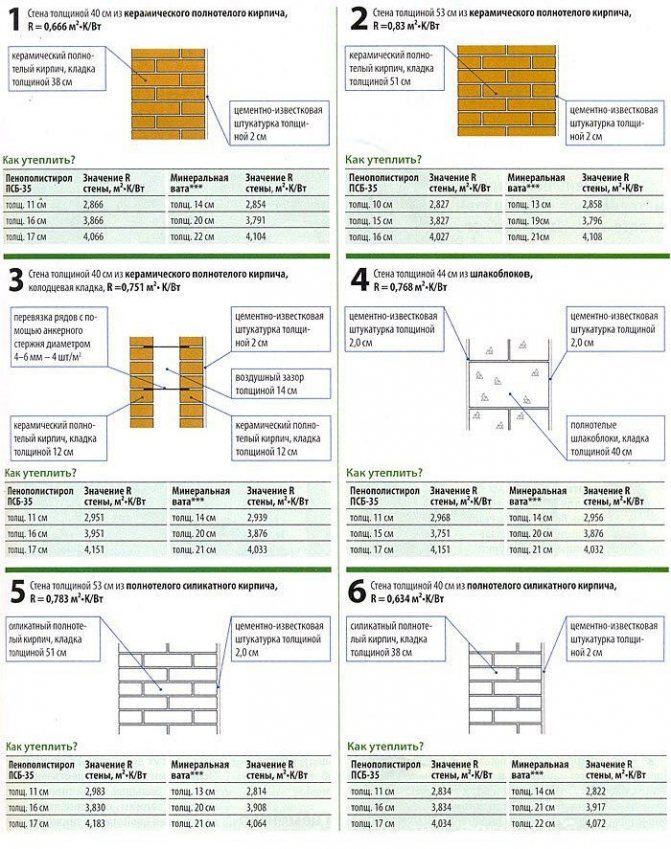

Insulation thickness depending on the wall design
To perform a calculation in the program, you will need to know the composition of the enclosing structure and the thermal conductivity of the materials used. Some types are in the program database, but it is better to check the thermal conductivity with the manufacturer of this or that product. Calculating a heat insulator using this application is quite simple.
Features and positive properties of the material
Thanks to the good thermal insulation of the foam, it will be possible to save material consumption when insulating the building. Due to the low weight (this indicator is achieved using a special production technology), there is no load on the base and walls of the house. High performance properties make it possible to use insulation for various objects. It is ideal for insulating floors, walls, plinths or ceilings from the inside. Subject to the technology of installation work, this material will retain its original qualities for 30 years or more. Polyfoam is actively used in the production of refrigerators and freezing units, as well as in the construction of warehouses where the temperature is low.
Polyfoam is a material of artificial origin, the price of which is low. It is not prone to decay and fungus and mold do not form on its surface. It is easy to install, as it can be cut without effort, adjusted to the desired shape and size.The properties of the insulation allow you to control the temperature regime in the room. The unique structure helps to accumulate heat and create coolness on hot days. Polyfoam is completely safe for humans, pets and the environment if the operating conditions are not violated.
The insulation contains a fire retardant in its composition, which, when burning, contributes to the process of self-extinguishing. The minimum dynamic stiffness guarantees excellent sound insulation properties.
The advantages of foam are:
- low cost;
- good thermal insulation properties;
- light weight;
- versatility and diverse scope of use;
- long service life;
- non-susceptibility to the emergence of biological microorganisms (fungus and mold);
- quick and easy installation without the use of special tools;
- safety for human health without the release of toxic substances;
- resistance to the destructive effects of insects;
- high soundproofing performance;
- compatibility with many materials;
- excellent tolerance to operating conditions where there are sharp changes in temperature.
Insulation technology
After it has been decided what material is required to complete the work, it is important to familiarize yourself with the nuances of the work technology. When fastening, it is necessary to take into account such features of thermal insulation as:
- low strength;
- destruction when exposed to moisture and cold (high-quality waterproofing and vapor barrier will be required);
- instability to fire;
- low vapor permeability, creating a greenhouse effect in the house (a forced ventilation device is required).
The material can be mounted from the cold air side or from the inside. Foam insulation outside will be more competent. Insulation of walls with polystyrene from the inside can be performed only if there are justifications (there is no way to disassemble the decoration of the house, insulation of one apartment in an apartment building).
We also recommend that you familiarize yourself with the instructions for insulating floors with foam. Insulation of ceilings with this material also has its own nuances. To provide reliable protection from cold, it is better to place the heat insulator on the cold air side.
Mounting to the wall is carried out with glue, and after the solution dries, the material is additionally fixed with dowels-fungi. It is better to wait about 3 days before proceeding with fixing with dowels. If the heat engineering calculation was performed correctly, and the technology was not violated during installation, the foam will be durable and reliable.
Installation of foam sheets
The installation of this insulation depends on what size and quality the sheets are used, and where exactly the work is carried out.
- Sheet thickness 15 mm it has a low density, is very fragile, therefore it can often be found in internal partitions. Usually they are not attached in any way, but simply fit between the lags.
- Styrofoam 25 mm and 35 mm already suitable for facade work. Plates are fixed with glue to the surface, and then additionally screwed with dowels. It is better to install the sheets in a checkerboard pattern to avoid cold bridges. Outside, the wall is either covered with plaster or bricked. The sheets are suitable for floor insulation.
- Styrofoam 50 mm and 100 mm has the highest density and is suitable not only for construction work, but also for road work.
Polyfoam 50 mm and 100 mm, which one to choose, characteristics, how to apply
Sometimes you need to choose foam for insulation - 100 mm or 50 mm, which one will be optimal? The question of which foam is better to use often worries developers, because it is this insulation that is used most often for houses and apartments. It is important to take into account the characteristics of the foam, they can vary significantly and affect the durability and integrity of structures.On the walls of the house, on the ceilings, in the floor and in the roof, you need to install only a high-quality, durable layer of insulation. Is foam suitable for these purposes and which one ...
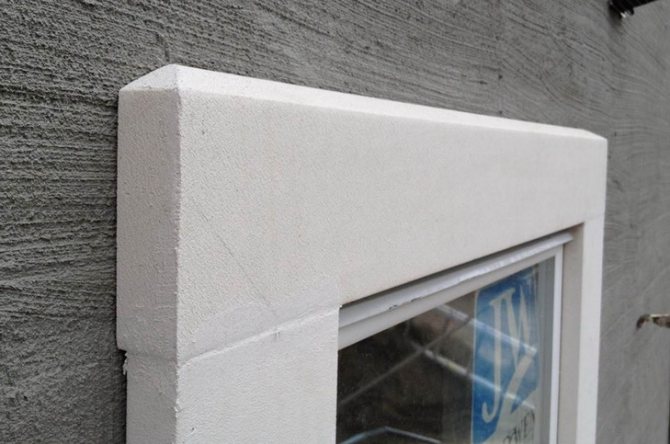

Pay attention to the density of the foam
It is not only the thickness of the foam sheets that plays a key role (100 mm sheet or 50 mm ...). Expanded polystyrene is available in different densities, characteristics will depend on it. According to the standards, the density of the foam must be:
- 15 kg / m cube - applied on horizontal surfaces, without load and without squeezing. Well suited for insulating ceilings and floors (horizontal surfaces) where possible.
- 25 kg / m cube - the most widely used, including for wall insulation using the "wet facade" technology, under plastering on all walls, including at a height (necessarily with additional fastening with disc dowels), as well as on facades of buildings.
- 35 kg / cubic meter is a fairly dense and strong material, perfectly suited for plaster, can fit under decks and withstand deformations with rare movement of people.
The specialist explains: the higher the density of the foam, the higher its price, and the lower its thermal insulation qualities. Dense material is stronger, retains its integrity and shape longer. But whether such strength is needed, and where is it needed - to decide in accordance with the project ...
Don't buy a fake
Now firms that produce or sell polystyrene supplied from abroad can "screw up" for the sake of economy. For example, several packages in a batch of 30 pieces will end up with loose sheets crumbling. On the part of the customer, with a serious approach to business, it is necessary to collect data on the final quality of products in the region before making a choice. This will save you from the possible serious costs of rework due to low-quality material.
Related article: How to hang a cabinet on a drywall wall
How can you identify defective foam: - the sheet crumbles in your hands. By running your hand over the foam sheet, you can easily separate the granules, especially at the corners.
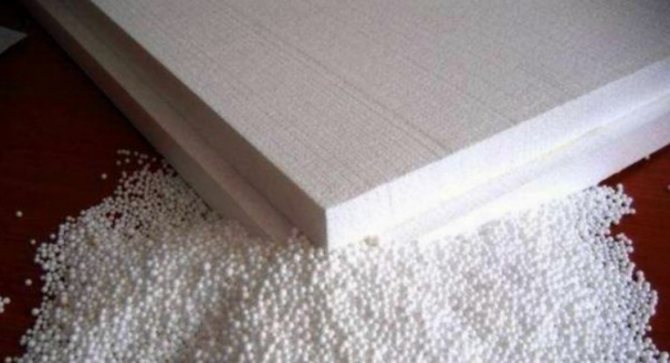

Application
Polyfoam can surprise with its properties, it is very light, more than 95% of its composition is air. Hence the excellent thermal insulation characteristics among heaters. The thermal conductivity coefficient of expanded polystyrene foam - 0.032 - 0.038 W / m ºС - depending on the density of the material, it is 20 - 25% less than that of mineral wool in real operating conditions (not on the stand with a plate from the manufacturer ...).
The lightness of the foam insulation and its properties allow it to be used everywhere - as long as there is no contact with its enemies - direct ultraviolet radiation, water and rodents. And also cannot be used inside in a fireproof form ...
Expert Advice for Use: Do not place foam in closed cavities of load-bearing structures. Replacing a heater that has failed due to its service life or due to rodents will be too problematic and expensive ...
Recommendations for purchasing styrofoam
Many people think that it is wise to go to the market, to the supermarket, and purchase foam for insulation. But if we are talking about the volume of house insulation, then this is already becoming a wholesale supply. Isn't buying a few thousand (tens of thousands) with a savings of 20-30% interesting?
In almost every regional center (regional) a warehouse company has been set up, which supplies heaters - masters who perform insulation work. But it delivers exclusively by trucks. Having found such a company in your area, you can order a truck of 100 or 50 mm styrofoam, and be sure to simultaneously purchase everything you need cheaply there - bundles of dowels, plaster mesh, decorative corners, plaster, facade paint ....
100 mm Styrofoam - is it suitable everywhere?
What thickness of thermal insulation should be used? - with the same we decide the question of whether it is worth saving on the thickness of the insulation.When it comes to saving heating for many years, small amounts of money associated with different thicknesses of insulation cannot be considered at all. The only question is the possibility of creating structures and the expediency of the rate of heat transfer ...
As you know, according to calculations, and in accordance with the recommendations of experts, in the middle lane, and "in the south", for an ordinary cold wall of brick, cinder block, heavy concrete, the minimum thickness of an effective heat insulator should be from 100 mm. Then you get the most economical option for heat saving, taking into account the cost of heating and wall construction.
Choose 50 mm foam - a universal solution
Often, walls and other structures themselves are quite warm, for example, the same as 50 mm thick foam. Then they need to be re-insulated with a layer of insulation with a thickness of less than 100 mm. True, there may be such an option that it is necessary to use only mineral wool ("breathable" vapor-permeable), and not insulating foam at all, but that's another story ....
Or for floors in a house, the usual thickness of thermal insulation is from 150 mm, and for the northern regions - 200 - 250 mm. It turns out that it is more expedient to gain such a thickness in individual structures with foam sheets with a thickness of 50 mm, with overlapping seams in different layers ... Hence the popularity of insulation sheets of 50 mm, it is used in several layers. It remains to choose and purchase the right material.
There are many opinions about the selection and detection of fakes, low-quality material. What will the private video recommend - see further ...
Which sheets are better to buy
Styrofoam sheets vary in size and density based on where they will be used. Usually they are slabs with a width of 1 and 1.2 meters and a length of 1-4 meters.
Those who have chosen polystyrene as a heater should know that the price of all thermal insulation works depends on the price per sheet. In general, it is worth noting that the thicker and denser the foam sheet, the higher the price per sheet.
When buying, it is important to choose the right supplier. Polyfoam 100 mm has already a rather high price, so it is worth carefully examining the samples. Many companies offer additional benefits and discounts to their customers.
This type of insulation is easy to buy and install. It is a well-proven material in construction. Having protected the house with its help, there is no doubt that the heat will not leave it even in the most severe frosts.
- In stock
- Wholesale
- 01.08.19
Thickness from 20 to 100 mm. Simple, effective and reliable insulation. Polyfoam is used to insulate walls, floors, roofs, attic, foundations, balconies, garage, and is widely used in industrial and civil construction.
- On order
- Wholesale / Retail
- 29.07.19
Our company offers a wide range of building and finishing materials of various brands and manufacturers. The company's specialists are happy to help in choosing the most suitable products in terms of price and quality.
- On order
- Wholesale / Retail
- 29.07.19
Our company offers a wide range of building and finishing materials of various brands and manufacturers. The company's specialists are happy to help in choosing the most suitable products in terms of price and quality.
- On order
- Wholesale / Retail
- 29.07.19
Our company offers a wide range of building and finishing materials of various brands and manufacturers. The company's specialists are happy to help in choosing the most suitable product in terms of price and quality.
- In stock
- Wholesale
- 22.05.19
Insulation materials are used to reduce heating costs. Most of the materials offered today for thermal insulation retain their properties for several decades.
Pros and cons
Merits foam has much more than disadvantages, but first things first. The first advantage that allows the use of foam as insulation is its excellent thermal insulation properties.In addition, this material is not able to absorb moisture, and therefore no vapor barrier is needed, and in the future this useful property will allow you not to know the problems with the development of mold and mildew.
Polyfoam is a fairly light material, so work to strengthen the foundation is not required, and it is very simple to work with it. It is a durable material that does not deform over time and does not change its properties. The low price for this type of insulation is a decisive argument for its choice.
But not without disadvantages. The main one is flammability: the foam easily supports combustion, while emitting caustic toxic smoke. That is why it is better to choose a material impregnated with an antiprene composition for insulating a house, which prevents self-ignition. In addition, rodents often arrange minks in the foam, which is a common reason for rejecting this type of insulation, but if the installation is carried out according to all the rules, then this trouble can be avoided.
Profitable purchase of foam insulation
You can buy polystyrene in the required quantity in our company. The material is supplied in sheets, which makes it easy to transport, store and handle. We offer an affordable price for 1m² of material and qualified assistance in choosing. By giving preference to this insulation, you will be able to minimize the costs required for organizing the structure during the operational period, save usable space, reduce the costs associated with loading and unloading operations, do without the use of expensive and technologically complex tools during installation, and also reduce the timing of construction activities.
What is Styrofoam?
The material that we used to call polystyrene can be made in different ways, eventually forming a material with different properties and appearance. So, the most popular is polystyrene foam... He can be press: household appliances are often packed in this, and the material looks like many small balls tightly pressed against each other. Such material easily crumbles and breaks, and, of course, is not suitable for insulation. Bespressovoy It is much more difficult to crush foam plastic, in it the granules are very tightly bound together, but in production it is also more difficult. But both the foam plastic has one drawback - the presence of pores into which moisture vapor can enter, and subsequently condense and destroy the material. That is why only extrusion polystyrene, which is devoid of all these shortcomings and will be able to serve for about 60 years.
Related article: How to make a brick wall in an apartment
In addition, there are other types of foams on the market that are not used for insulation, so we will briefly mention them. Polyurethane foams are often used in the manufacture of furniture. In fact, this is the most common foam rubber, which turns yellow in the sun, is short-lived, crumbles quickly, is very flammable and emits a lot of toxic substances during combustion.
PVC foam in many ways similar to extrusion, but when burning, it emits much more toxic substances. Polyethylene foam familiar to many of us: often fragile things are wrapped in its thin sheets.
Styrofoam properties:
- Cheapness;
- Ease;
- Ease of processing;
- Environmental friendliness;
- Harmlessness;
- Fire safety;
- Resistance to microorganisms and various technical environments;
- Moisture resistance;
- Buoyancy;
- Excellent heat and sound insulation qualities;
- Strength;
- Durability.
For nearly 60 years, various foam products have found application in many areas of human activity.
Slab size
Foam plates are mainly produced in three standard sizes: 0.5 * 1, 1 * 1 and 2 * 1 m.It should be noted right away that this insulation is easily cut, so no problems should arise during the installation process.So, it is better to choose the material that is most suitable for the area of the insulated surface. As a rule, for insulation of balconies, loggias and apartments in apartment buildings stop their choice on slabs measuring 0.5 * 1 m: it is most convenient to work with them, they are more economical, and it will be easier to insulate all kinds of complex details of the facade with such material. But if you need to insulate a private house, the walls of which differ in the correct flat surface, then it makes sense to use slabs of 1 * 1 m in size. The largest material, slabs of 2 * 1 m are used least often for especially large buildings.
What density is needed?
To insulate a house, polystyrene of different densities is used, depending on what goals are pursued, and what exactly needs to be insulated. So, to insulate the walls from the outside, it is better to opt for polystyrene. with a density of 25 kg / m³, if it is necessary to insulate the floor, then use plates denser - 35 kg / m³, the same material is used for the arrangement of the roof. But for wall insulation from the inside, it is better to choose foam with a density 15 kg / m³.
It is better not to use polystyrene with a density of 15 kg / m³ for insulation of external walls. Of course, this is not prohibited, but its durability, strength and reliability will be in question, which is easy to check on your own, because you just need to compress the material. As a result, you can get less durable insulation, and in terms of the level of thermal insulation, such foam is inferior to a denser analogue. But it is worth noting that such material can be used to insulate non-capital structures: stalls, small shops, warehouses. Also, foam with a density of 15 kg / m³ can be used to insulate some parts of the facade that are adjacent to the house, but do not require serious insulation: a veranda, technical buildings, open balconies.
Polyfoam with a density of 35 kg / m³ is used extremely rarely for wall insulation: it copes with its tasks perfectly, but it has a high price. In some cases, by the way, when thermal insulation properties are especially important, it is more advantageous to use a thinner sheet of denser foam than medium density foam, but double thickness. But in most cases it is the material with a density of 25 kg / m³ that is in the highest demand.
Thickness
The thickness of the foam is a parameter that should be chosen based on an individual combination of factors: wall thickness, wall material, climatic conditions, etc. That is why it is impossible to say that a 5 cm thick foam layer is suitable for absolutely everyone, although it is this material that is most often used to insulate apartment buildings in the temperate zone.
Everyone can do it himself calculate the required thickness of insulationusing the tables below. So, let's say you live in a house whose walls consist of two rows of bricks. In this case, the heat transfer resistance will be 0.405 m2 * ° C / W. considering that the thickness of the walls is 54 cm. At the same time, the standard value, for example, for Moscow is 3.16 m 2 * 0 C / W, the difference is 2.755 m2 * C / W, and this is what needs to be compensated for with a heater, the coefficient of thermal conductivity of which in our case 0.031 W / m * ° C. It turns out that the thickness of the insulation will be equal to 0.031 * 2.755 = 0.085 m, which is 8.5 cm.
Foam quality
When all other parameters are determined, you need to evaluate the required material for quality. First, you need to ask quality certificates: Responsible manufacturers and sellers always supply the goods with the necessary documentation confirming their quality. Secondly, you need to make sure that the product stored in proper conditions, So what on its packaging the necessary marking is present, informing about the main properties of this material.Polyfoam should not be stored under the influence of direct sunlight: in this case, it loses some of its operational properties, it may begin to emit an unpleasant odor. It is also important that the material is stored in a well-ventilated area and that the humidity is no more than 60%.
Attention should also be paid to the foam granules. They must be of the same size and evenly spaced throughout the volume. If in some places there are voids, and the granules fall off easily, then such a product can hardly be called high-quality. In addition, it will not be superfluous to compare individual sheets of material with each other: they must be absolutely the same in thickness, density, with smooth edges, and snow-white in color.
Features of foam
Recently, foam sheets have been used everywhere. They are used as protection against heat loss, for protection against mechanical shocks (for example, when transporting fragile things, it is put in a package). It has a number of advantages that make it stand out from other materials.
Their list is as follows:
- Low thermal conductivity;
- Good sound insulation properties;
- Durability;
- Light weight;
- Ease of installation;
- Environmental friendliness;
- Low cost.

